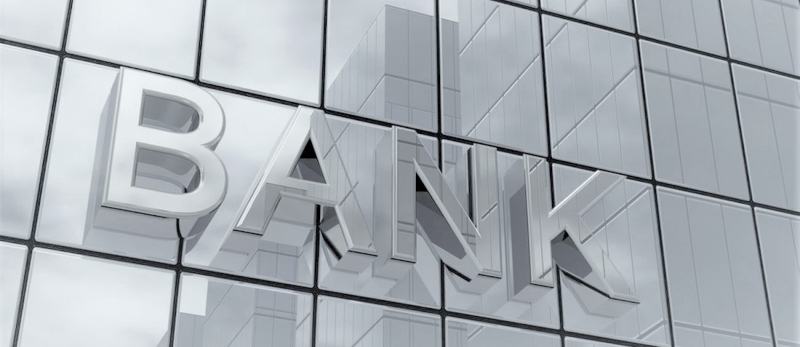Pensioners can qualify by providing proof of their ongoing pension income,
but borrowers over 60 are normally only eligible for shorter term mortgages – perhaps 10-15 years.
How Much Can I Borrow?
Different than in your home country you can borrow up to a maximum of 70% of the purchase price or valuation. If you are a fiscal resident, you may borrow up to a maximum of 80%.
Spanish banks will take into consideration your income and also your existing mortgage charges. The guideline is that around 1/3 of your net income may be used for mortgage payments. You will need to prove to the bank your income and liabilities by showing them original documents. Spanish banks require complete insight into your financial situation.
Rental Income
Mortgage lenders in Spain will not take potential rental income into consideration when processing your mortgage application – you must be able to afford a property without receiving the rental income.
The cost of a mortgage in Spain

Mortgage valuation
Property valuations, or ‘tasaciones’ in Spanish, play an important role in the Spanish property market as they determine how much banks are prepared to lend to house buyers.
Before granting a mortgage a Spanish lender will require that the property be valued by one of their appointed valuation companies. This can cost anything from a few hundred Euros to over a thousand Euros depending upon the value of the property. The person applying for the Spanish mortgage has to pay this cost.
The value of the house, which the estimator determines, applies in principle as basis for the calculation of the maximum mortgage sum. On the other hand, some banks take the lower value as an underlying: either the purchase price or the estimated value. But these are exceptions and should not be considered here.
Arrangement or opening fee
Credit institutions charge a percentage for granting the mortgage. It is a single payment that must be made before the loan agreement is signed.
Home and life insurance
It is compulsory to take out a home insurance policy for the property that is going to be mortgaged, at least against fire. The policy beneficiary must be the bank, so as to guarantee that, in the event of a catastrophe and total loss of the home, the bank will receive the full amount that had been given. Occasionally, the bank may demand that a life insurance policy be taken out and linked to the loan, so that in the event of the owners’ death, the debt will be settled.
Notary and Registrar’s fees
Mortgage loans are constituted by means of a public deed that is signed before a notary. That deed must also be registered at the corresponding Property Register.
Stamp Duty
This is a tax that is applied to acts that are formally laid down in public documents, which must be registered and which entail a financial sum, such as mortgages. It is calculated according to the maximum mortgage liability (the sum of the capital, ordinary interest, late-payment interest, administrative expenses and eventual Court proceeding costs).
Administrative agency
The bank will entrust the processing of the mortgage deed to an administrative agency. This procedure basically involves collecting the document from the notary’s office, settling the tax, submitting the document at the Property Register and collecting it again once it has been entered.
New Mortgage Law

On 17 June 2019 the new Mortgage Law entered into force in order to adapt, with years of delay, our legislation to the EU directives approved back in 2014. This European regulation sought to harmonize the legislation of the member countries with the objective of providing security for banks but mainly for their clients when accessing to finance.
Some of the most important changes
Who pays the expenses? The cost of valuation or appraisal of the property correspond to the borrower, but unlike what happened until the entry into force of the new law, now ALL management fees, stamp duty (AJD), notary fees and Land Registry fees for the constitution and registration of the mortgage correspond to the lender entity.
Services that the bank can charge. The bank will only be authorized to charge for those services or expenses related to the loan/mortgage that have been specifically requested, or expressly accepted, by the borrower and only when these services have been effectively provided or the expenses have existed and can be shown. In relation to the opening fee or commission, it may be charged only once and must include all the costs of studying, processing and granting of the loan.
Commissions that the bank can charge. The new law only allows to charge the following commissions:
- In loans with variable interest, 0.25% of the total or partial capital advanced repayment during the first three years of the loan contract, or alternatively, 0.15% but in this case over the first five years of validity of the contract.
- In fixed interest loans, compensation of up to 2% of the total or partial capital advanced repayment during the first ten years of the contract may be requested, and after that period will fall to 1.5% until the end of the loan life.
- The change of a variable to fixed interest during the term of the loan may only accrue a commission in favor of the bank of 0.15% during the first three years of the contract.
How long does the process take?
It is very different from bank to bank how long it really takes from the day the application for the loan up to the promise or payment of the mortgage.
From experience we can say that you already have to bring some patience.
A realistic order of magnitude is if you assume around 4 weeks. Sure, we have experienced it a few times, that only a few days have passed from the application to the payment, but that too are rather exceptions.
It should also be noted that loan commitments are only valid for a certain period of time.
The day of registration
On the day of Escritura (notarised deed of sale), the representative of the bank also comes to the notary and lets you sign the notarial mortgage contract. He then usually has one or more confirmed bank checks for the seller. Again, there is the issue of the mortgage and the payment train by train.
If the seller previously had a mortgage on the property, his bank representative also appears at the notary’s appointment and deletes the seller mortgage. This happens almost at the same time at the notary.
Mortgage arrangements
A. Interest
When the general interest rate is low, it could be interesting to change to a fixed rate. Nowadays more and more mortgages are being taken out with a fixed interest rate. There are different ways to fix the interest. When choosing the right bank make sure you do not get tempted only by a low interest rate, these are offered through unnecessary and expensive cross selling products.
B. Runtime
Note the maximum duration of the mortgage. Each bank has a fixed maximum age of the customer up to which it lends mortgages. In most cases, this age is 75 years.
For example, if you are 50 years old, you will be granted the mortgage for a maximum of 25 years. The mortgage term is important for calculating the monthly burden. The longer the term, the lower the monthly burden. And the amount of the monthly burden is again important for determining the total burden of the customer.
C. Early repayment
You gain extensive freedom by being able to repay the loan at any time for a small fee. The “prepayment penalty” is usually only between 0.5 to 1%.
This makes the mortgage relatively flexible, because you can replace it whenever you want or can.
Mortgage Simulator
Do you want to calculate the installment of your mortgage or your personal loan? Enter the amount, term and interest rate and you will get the installment to pay for your loan.
We’ll find the best financing option for you

- No-obligation consultation.
- Comprehensive service.
- Customized financing solutions.
 Spanish
Spanish  English
English  German
German 




